Abstract
Three social-interaction behaviors of a withdrawn chronic schizophrenic were increased using a discriminated avoidance ("nagging") procedure. The three behaviors were: (a) voice volume loud enough so that two-thirds of his speech was intellibible at a distance of 3m; (b) duration of speech of at least 15 sec; (c) placement of hands and elbows on the armrests of the chair in which he was sitting. "Nagging" consisted of verbal prompts to improve performance when the behaviors did not meet their criteria. A combined withdrawal and multiple-baseline design was used to evaluate the effectiveness of the procedure, and the contingency was sequentially applied to each of the three behaviors in each of four different interactions to determine the degree of stimulus and response generalization. Results indicated that the contingency was the effective element in increasing the patient's appropriate performance, and that there was a high degree of stimulus generalization and a moderate degree of response generalization. After the patient's discharge from the hospital, the durability of improvement across time and setting was determined in followup sessions conducted at a day treatment center and at a residential care home. Volume and duration generalized well to the new settings, while arm placement extinguished immediately.
Full text
PDF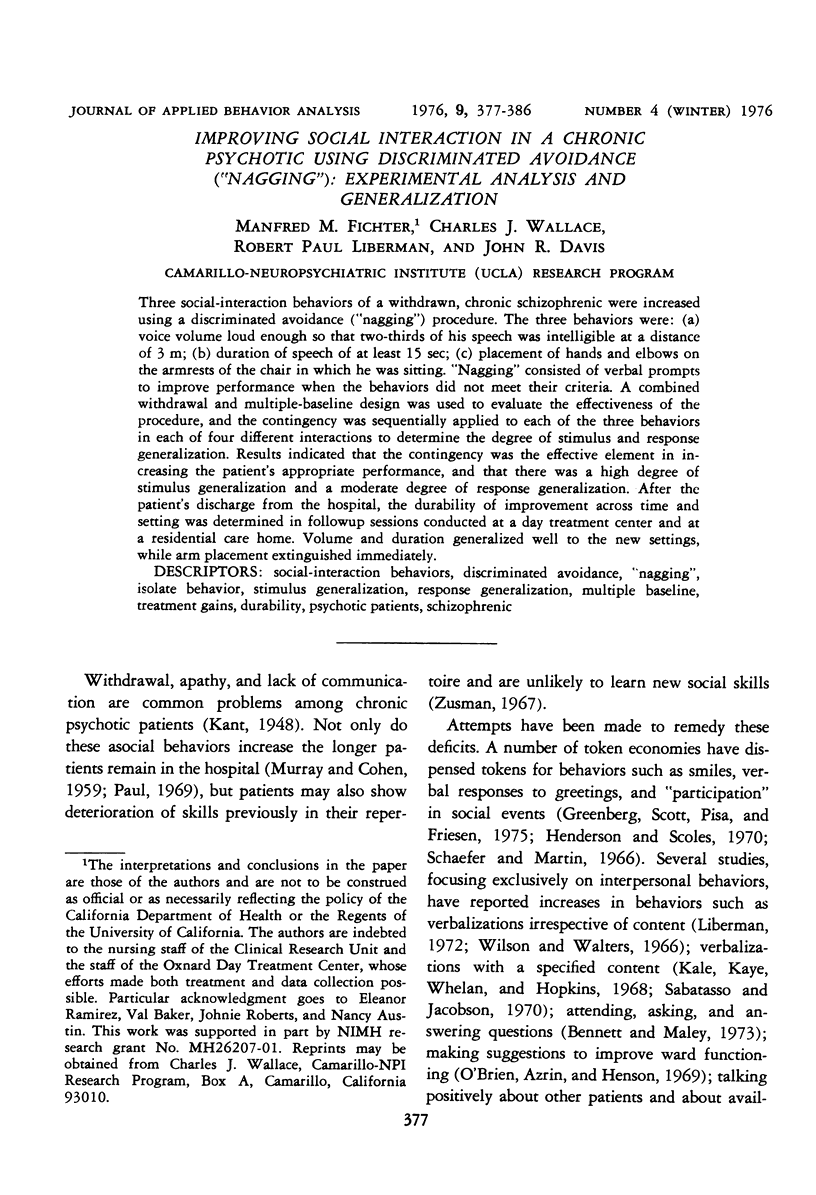
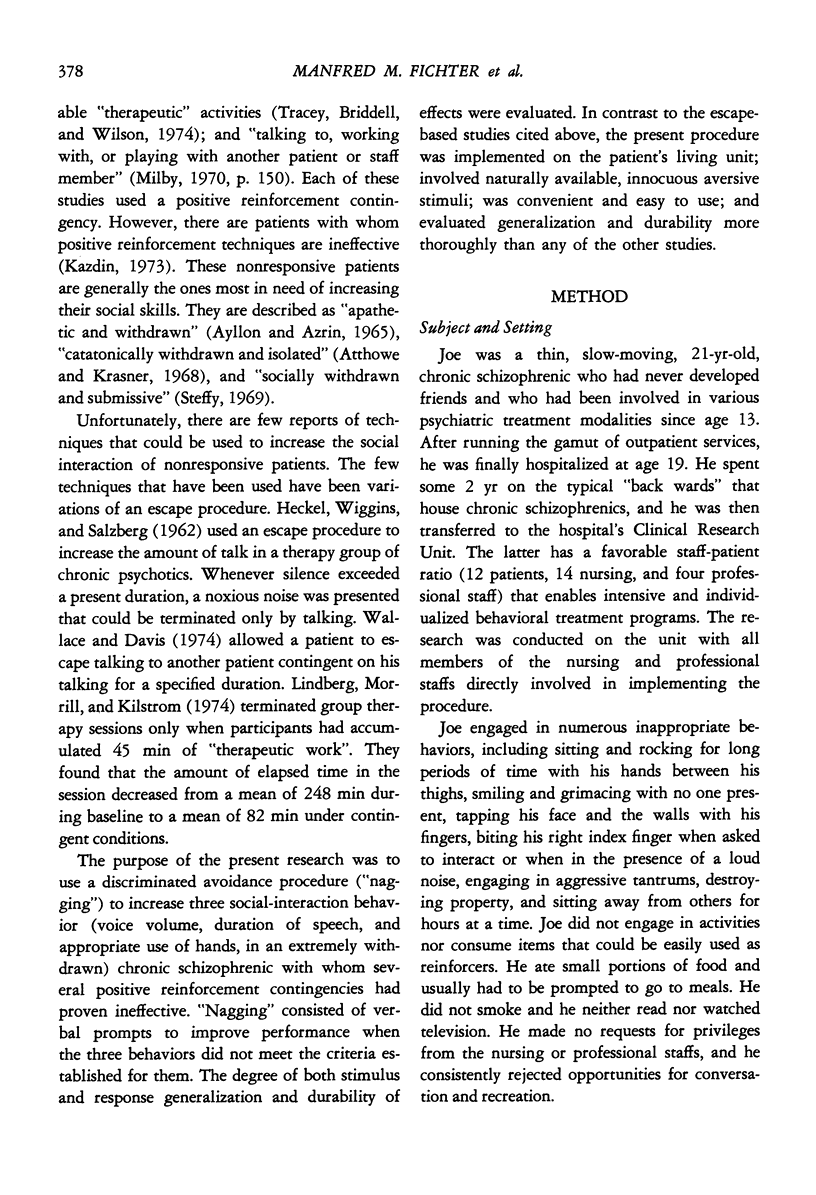
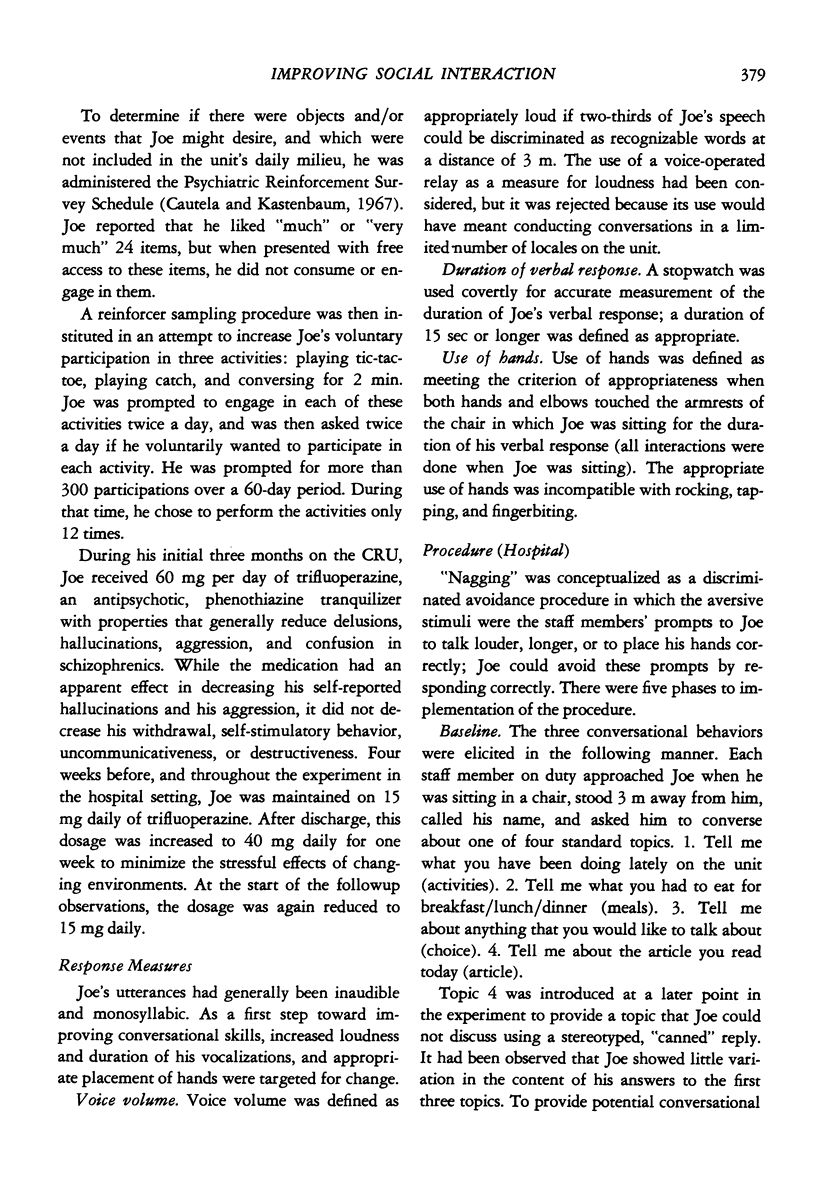
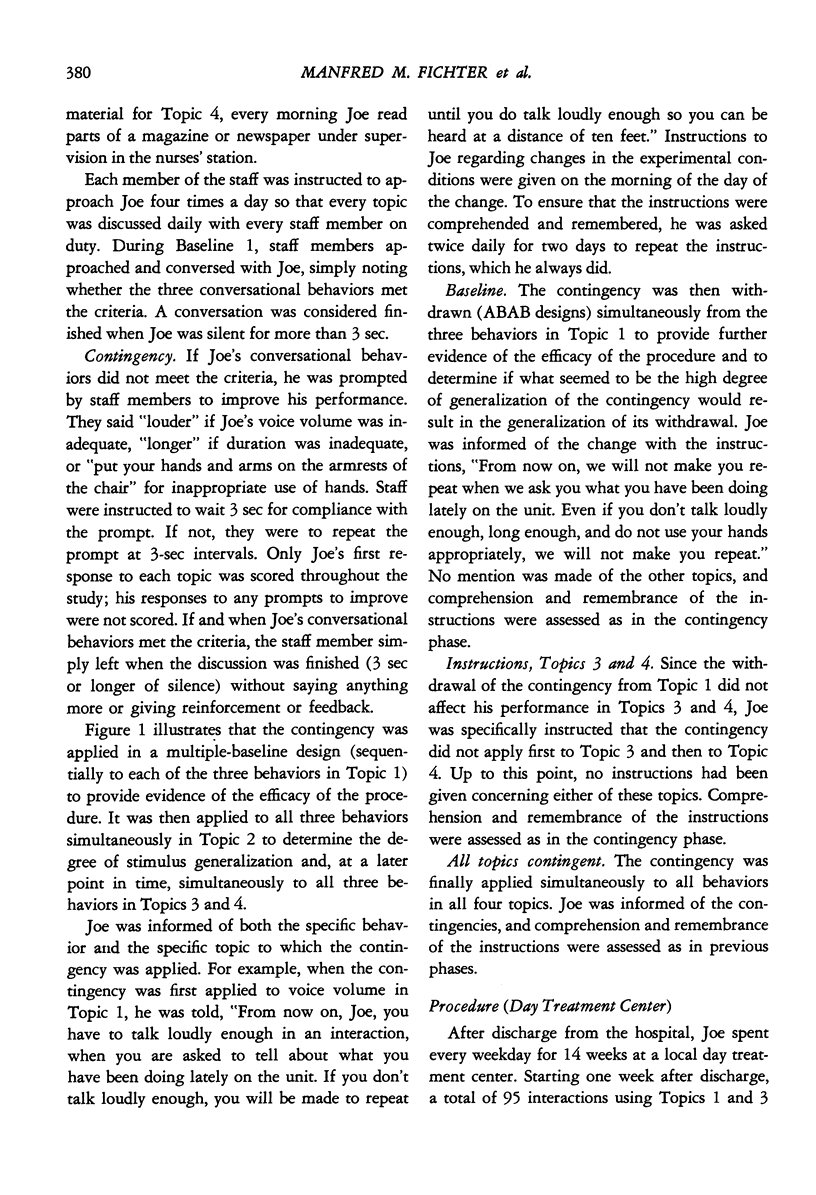
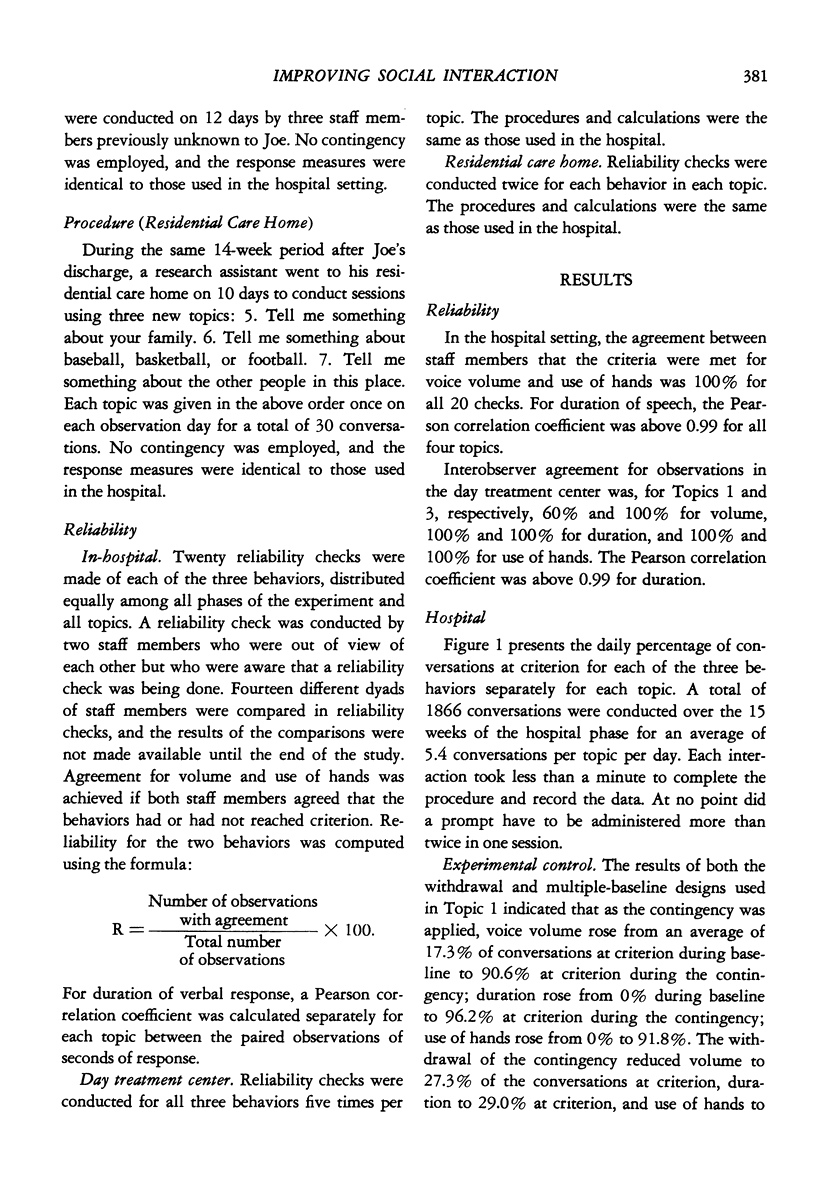
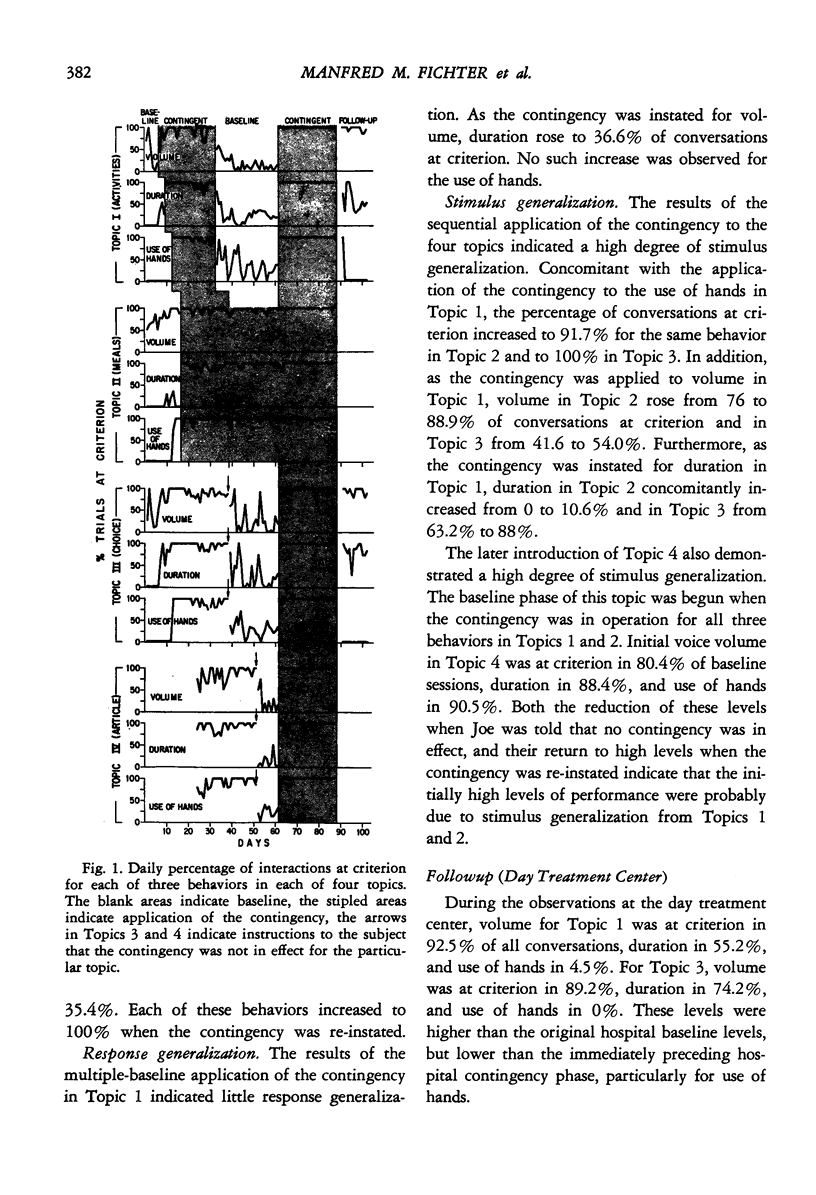
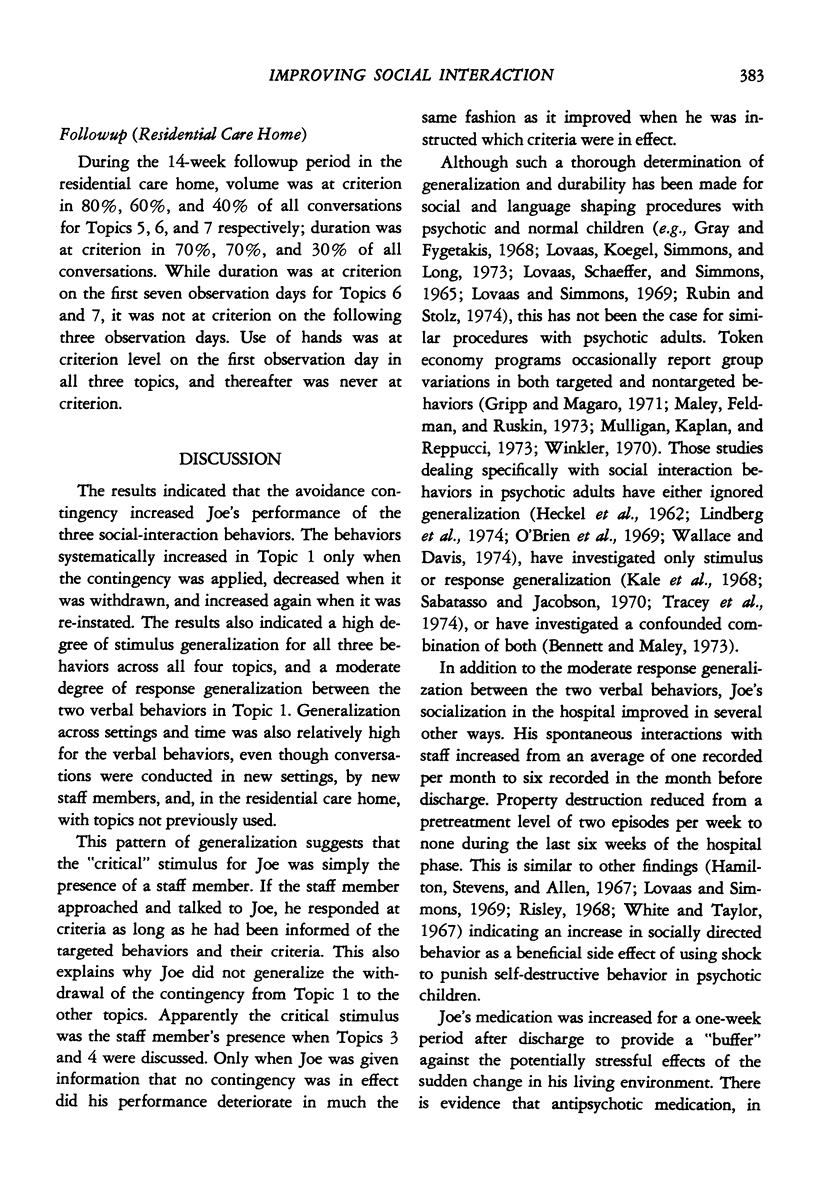
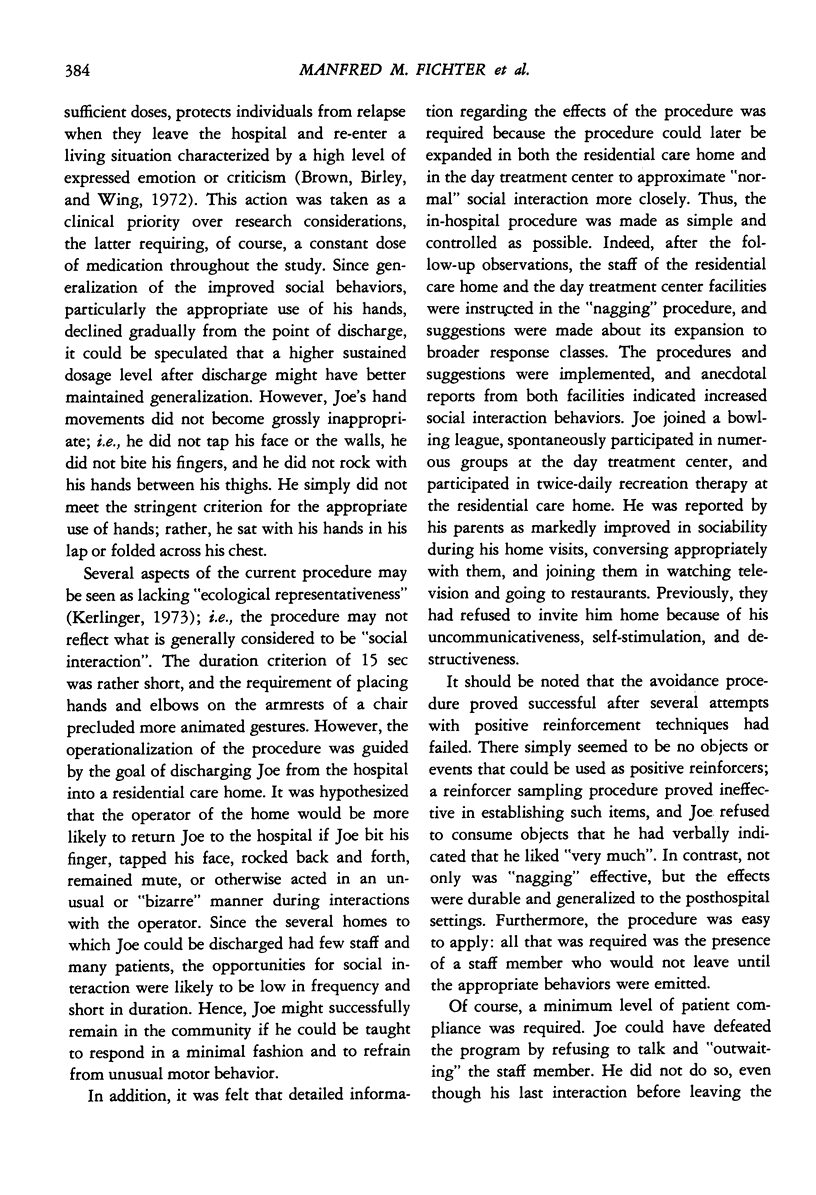
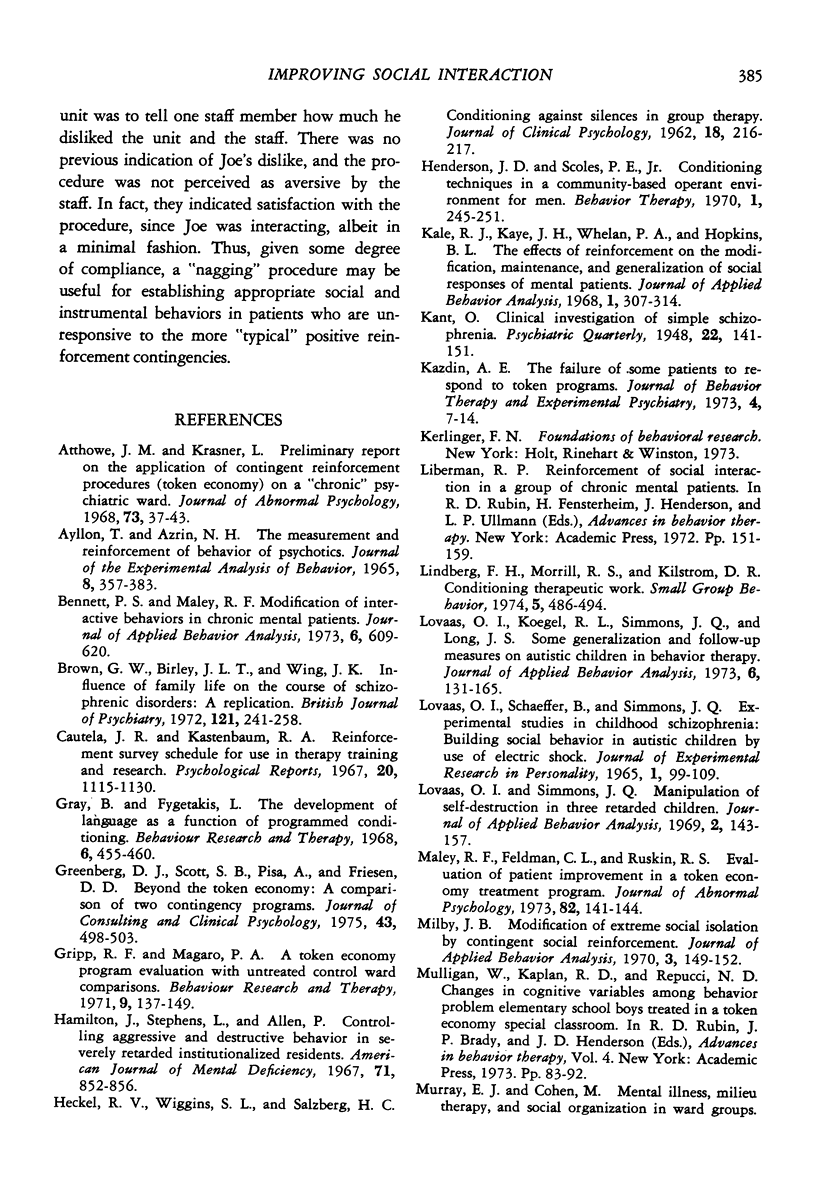
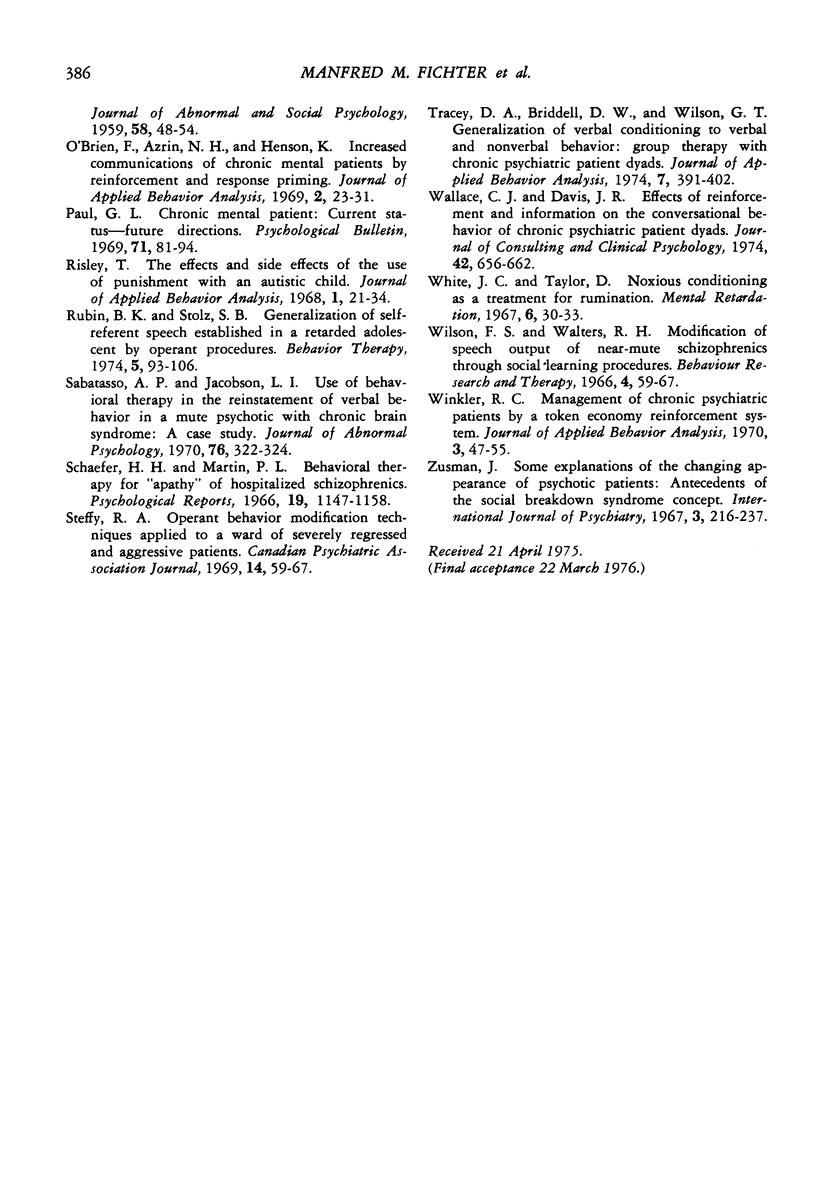
Selected References
These references are in PubMed. This may not be the complete list of references from this article.
- Atthowe J. M., Jr, Krasner L. Preliminary report on the application of contingent reinforcement procedures (token economy) on a "chronic" psychiatric ward. J Abnorm Psychol. 1968 Feb;73(1):37–43. doi: 10.1037/h0025439. [DOI] [PubMed] [Google Scholar]
- Ayllon T., Azrin N. H. The measurement and reinforcement of behavior of psychotics. J Exp Anal Behav. 1965 Nov;8(6):357–383. doi: 10.1901/jeab.1965.8-357. [DOI] [PMC free article] [PubMed] [Google Scholar]
- Bennett P. S., Maley R. F. Modification of interactive behaviors in chronic mental patients. J Appl Behav Anal. 1973 Winter;6(4):609–620. doi: 10.1901/jaba.1973.6-609. [DOI] [PMC free article] [PubMed] [Google Scholar]
- Brown G. W., Birley J. L., Wing J. K. Influence of family life on the course of schizophrenic disorders: a replication. Br J Psychiatry. 1972 Sep;121(562):241–258. doi: 10.1192/bjp.121.3.241. [DOI] [PubMed] [Google Scholar]
- Gray B. B., Fygetakis L. The development of language as a function of programmed conditioning. Behav Res Ther. 1968 Nov;6(4):455–460. doi: 10.1016/0005-7967(68)90026-0. [DOI] [PubMed] [Google Scholar]
- Greenberg D. J. Beyond the token economy: a comparison of two contingency programs. J Consult Clin Psychol. 1975 Aug;43(4):498–503. doi: 10.1037/h0076900. [DOI] [PubMed] [Google Scholar]
- Gripp R. F., Magaro P. A. A token economy program evaluation with untreated control ward comparisons. Behav Res Ther. 1971 May;9(2):137–149. doi: 10.1016/0005-7967(71)90071-4. [DOI] [PubMed] [Google Scholar]
- Kale R. J., Kaye J. H., Whelan P. A., Hopkins B. L. The effects of reinforcement on the modification, maintenance, and generalization of social responses of mental patients. J Appl Behav Anal. 1968 Winter;1(4):307–314. doi: 10.1901/jaba.1968.1-307. [DOI] [PMC free article] [PubMed] [Google Scholar]
- Lovaas O. I., Koegel R., Simmons J. Q., Long J. S. Some generalization and follow-up measures on autistic children in behavior therapy. J Appl Behav Anal. 1973 Spring;6(1):131–165. doi: 10.1901/jaba.1973.6-131. [DOI] [PMC free article] [PubMed] [Google Scholar]
- Lovaas O. I., Simmons J. Q. Manipulation of self-destruction in three retarded children. J Appl Behav Anal. 1969 Fall;2(3):143–157. doi: 10.1901/jaba.1969.2-143. [DOI] [PMC free article] [PubMed] [Google Scholar]
- Maley R. F., Feldman G. L., Ruskin R. S. Evaluation of patient improvement in a token economy treatment program. J Abnorm Psychol. 1973 Aug;82(1):141–144. doi: 10.1037/h0034975. [DOI] [PubMed] [Google Scholar]
- Milby J. B. Modification of extreme social isolation by contingent social reinforcement. J Appl Behav Anal. 1970 Summer;3(2):149–152. doi: 10.1901/jaba.1970.3-149. [DOI] [PMC free article] [PubMed] [Google Scholar]
- O'brien F., Azrin N. H., Henson K. Increased communications of chronic mental patients by reinforcement and by response priming. J Appl Behav Anal. 1969 Spring;2(1):23–29. doi: 10.1901/jaba.1969.2-23. [DOI] [PMC free article] [PubMed] [Google Scholar]
- Paul G. L. Chronic mental patient: current status--future directions. Psychol Bull. 1969 Feb;71(2):81–94. doi: 10.1037/h0027065. [DOI] [PubMed] [Google Scholar]
- Risley T. R. The effects and side effects of punishing the autistic behaviors of a deviant child. J Appl Behav Anal. 1968 Spring;1(1):21–34. doi: 10.1901/jaba.1968.1-21. [DOI] [PMC free article] [PubMed] [Google Scholar]
- Schaefer H. H., Martin P. L. Behavioral therapy for "apathy" of hospitalized schizophrenics. Psychol Rep. 1966 Dec;19(3):1147–1158. doi: 10.2466/pr0.1966.19.3f.1147. [DOI] [PubMed] [Google Scholar]
- Steffy R. A., Hart J., Craw M., Torney D., Marlett N. Operant behaviour modification techniques applied to a ward of severely regressed and aggressive patients. Can Psychiatr Assoc J. 1969 Feb;14(1):59–67. doi: 10.1177/070674376901400111. [DOI] [PubMed] [Google Scholar]
- Tracey D. A., Briddell D. W., Wilson G. T. Generalization of verbal conditioning to verbal and nonverbal behavior: group therapy with chronic psychiatric patients. J Appl Behav Anal. 1974 Fall;7(3):391–402. doi: 10.1901/jaba.1974.7-391. [DOI] [PMC free article] [PubMed] [Google Scholar]
- Wallace C. J., Davis J. R. Effects of information and reinforcement on the conversational behavior of chronic psychiatric patient dyads. J Consult Clin Psychol. 1974 Oct;42(5):656–662. doi: 10.1037/h0037075. [DOI] [PubMed] [Google Scholar]
- White J. C., Jr, Taylor D. J. Noxious conditioning as a treatment for rumination. Ment Retard. 1967 Feb;5(1):30–33. [PubMed] [Google Scholar]
- Wilson F. S., Walters R. H. Modification of speech output of near-mute schizophrenics through social-learning procedures. Behav Res Ther. 1966 Mar;4(1):59–67. doi: 10.1016/0005-7967(66)90043-x. [DOI] [PubMed] [Google Scholar]
- Winkler R. C. Management of chronic psychiatric patients by a token reinforcement system. J Appl Behav Anal. 1970 Spring;3(1):47–55. doi: 10.1901/jaba.1970.3-47. [DOI] [PMC free article] [PubMed] [Google Scholar]
- Zusman J. Some explanations of the changing appearance of psychotic patients. Antecedents of the social breakdown syndrome concept. Int J Psychiatry. 1967 Apr;3(4):216–237. [PubMed] [Google Scholar]


